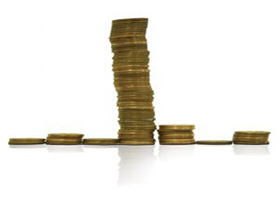


Given that most of the growth in FX market activity since 2007 is due to increased trading by other financial institutions, the $4 trillion dollar question is: Which financial institutions are behind this growth? The Triennial data do not break down trades within this category of counterparty. Discussions with market participants, data from regional FX surveys and an analysis of the currency composition and location of trading activity provide some useful clues. Taken together, they suggest the increased turnover is driven by:
- greater activity of high-frequency traders;
- more trading by smaller banks that are increasingly becoming clients of the top dealers for the major currency pairs; and
- the emergence of retail investors (both individuals and smaller institutions) as a significant category of FX market participants.
This column based on our recent research (King and Rime 2010) explores the contribution of each of these customer types to the growth of global FX turnover.
Increase in FX market turnover driven by algorithmic trading
An important structural change enabling increased FX trading by these customers is the spread of electronic execution methods. The investment in electronic execution methods has paved the way for the growth of algorithmic trading. In algorithmic trading, investors connect their computers directly with trading systems known as electronic communication networks. Examples of such electronic networks in FX markets are electronic broking systems (such as EBS and Thomson Reuters Matching), multi-bank trading systems (such as Currenex, FXall and Hotspot FX) and single-bank trading systems (such as BARX from Barclays, Velocity from Citigroup, and Autobahn from Deutsche Bank). A computer algorithm then monitors price quotes collected from different ECNs and places orders without human intervention.
Algorithmic trading is an umbrella term that captures any automated trades where a computer algorithm determines the order submission strategy. For example, FX dealers use algorithms to automatically hedge risk in their inventories or to clear positions in an efficient manner.
Customers are increasingly using execution management systems that break up trades and seek the best market liquidity to reduce market impact. Hedge funds and proprietary trading desks use algorithms to engage in macro bets, statistical arbitrage or some form of technical trading. All these activities are contributing to the increase in FX turnover.
High-frequency trading is one type of algorithmic trading that has received considerable media attention1. It is a trading strategy that profits from incremental price movements with frequent, small trades executed in milliseconds. While it emerged over a decade ago in equity markets, it became an important source of FX growth from 2004.
High-frequency trading takes place in the deepest and most liquid parts of the FX market, namely the spot FX markets for the major currency pairs. Market estimates suggest it accounts for around 25% of spot FX activity, or as much as $375 billion per day. This number can unfortunately not be verified using the data in the Triennial survey.
Banks trading increasingly as clients of top dealers
While banks engaged in FX markets below the top tier continue to be important players, the long-term trend towards greater concentration of FX activity in a few global banks continues (Figure 1, right-hand panel). The largest dealers have seen their FX business grow by investing heavily in their single-bank proprietary trading systems. The tight bid-ask spreads and guaranteed market liquidity on such platforms are making it unprofitable for smaller players to compete for customers in the major currency pairs.
Increasingly, many smaller banks are becoming clients of the top dealers for these currencies, while continuing to make markets for customers in local currencies. This hybrid role allows smaller banks with client relationships to profit from their local expertise and comparative advantage in the provision of credit, while freeing them from the heavy investment required to compete in spot market-making for the major currency pairs.
Banks trading increasingly as clients of top dealers
While banks engaged in FX markets below the top tier continue to be important players, the long-term trend towards greater concentration of FX activity in a few global banks continues (Figure 1, right-hand panel). The largest dealers have seen their FX business grow by investing heavily in their single-bank proprietary trading systems. The tight bid-ask spreads and guaranteed market liquidity on such platforms are making it unprofitable for smaller players to compete for customers in the major currency pairs.
Increasingly, many smaller banks are becoming clients of the top dealers for these currencies, while continuing to make markets for customers in local currencies. This hybrid role allows smaller banks with client relationships to profit from their local expertise and comparative advantage in the provision of credit, while freeing them from the heavy investment required to compete in spot market-making for the major currency pairs.
Electronic trading is transforming FX markets and encouraging greater trading activity by different classes of investors. During the three-year period from 2007 to 2010, the main contribution to the growth of FX turnover appears to come from high-frequency traders, banks trading as clients of the biggest FX dealers and retail investors trading online. While electronic execution methods have initially boosted growth in the main financial centres, this trend is also likely to lift turnover in other countries in the coming years. At the same time, the relative importance of inter-dealer trading may continue to decline as banks match more customer trades internally.
Click charts to enlarge.
Michael R King is senior economist, Financial Markets Division, Bank for International Settlements. Dagfinn Rime is senior researcher, Norges Bank and Adjunct Professor, Norwegian University of Science and Technology.
The views expressed in this article are those of the authors and do not necessarily reflect those of the BIS or the Central Bank of Norway.
This article was originally published on voxeu.org.
References
BIS (2010), Triennial Central Bank Survey of Foreign Exchange and Derivatives Market Activity in 2010 – Final results, December.
King, Michael R and Dagfinn Rime (2010), “The $4 trillion question: what explains FX growth since the 2007?”, BIS Quarterly Review, 13 December.


